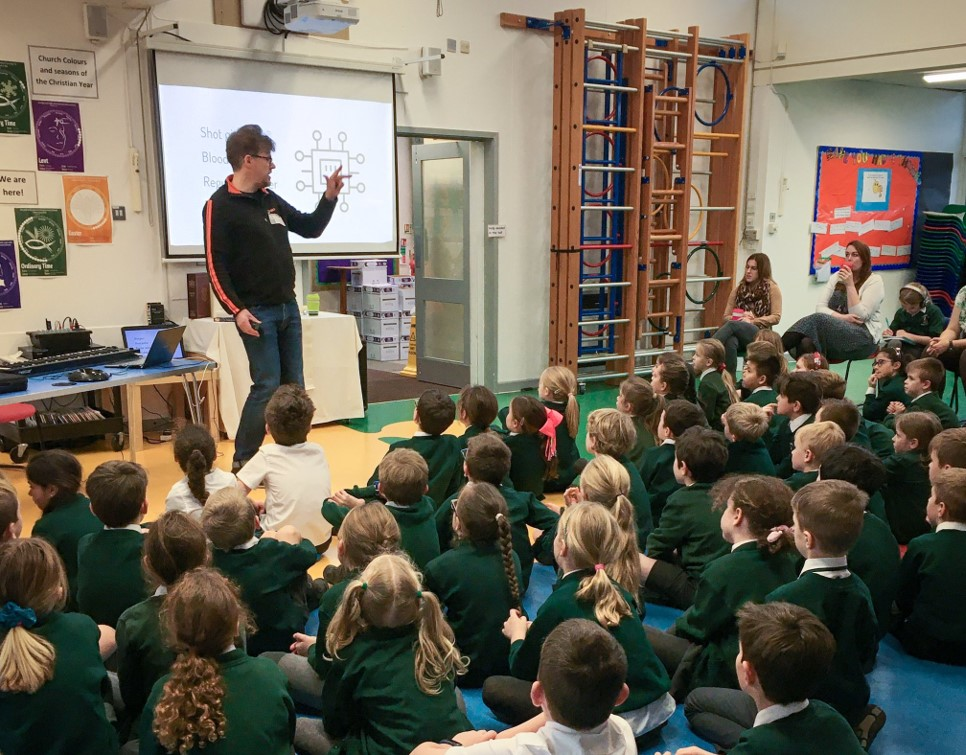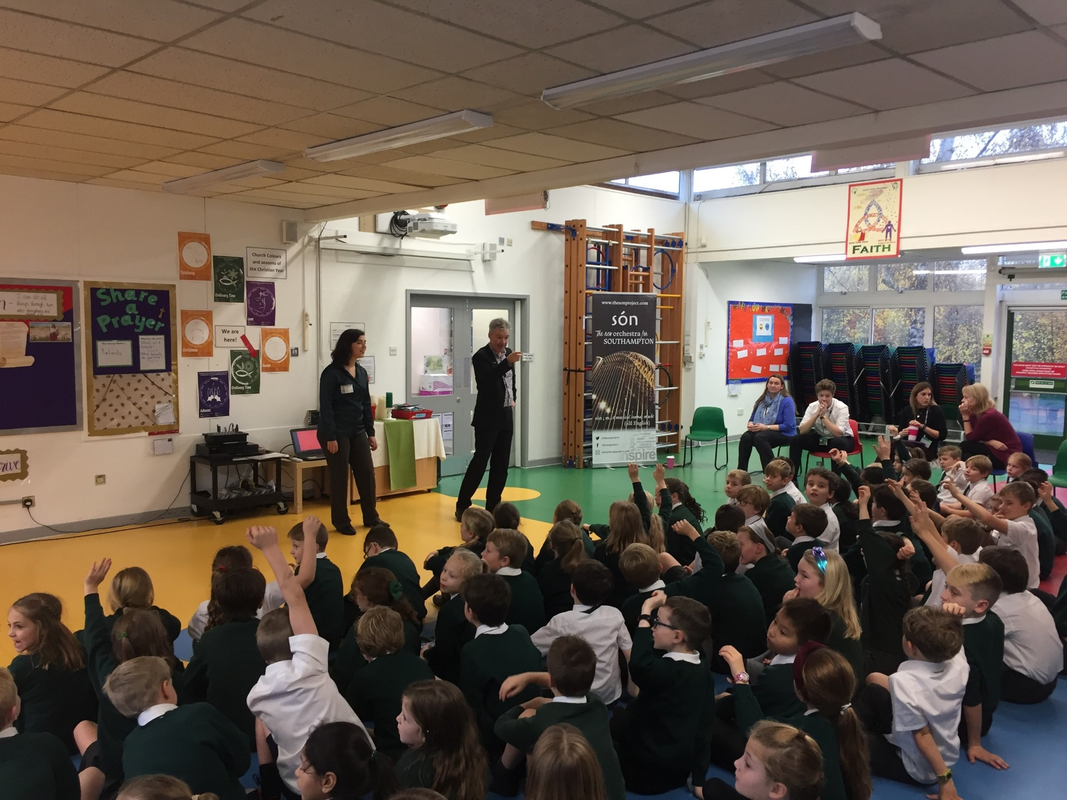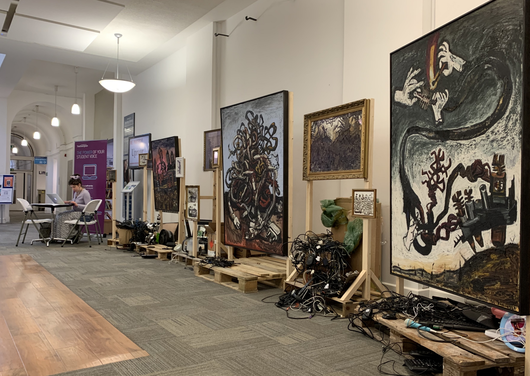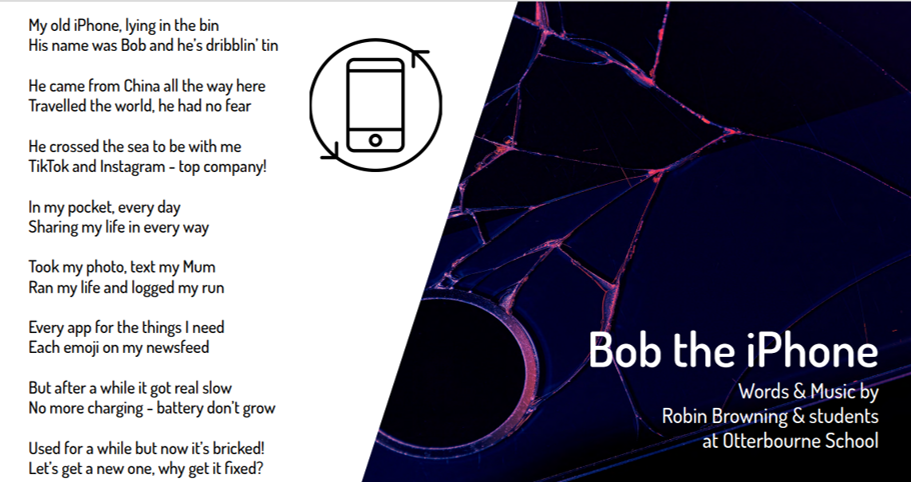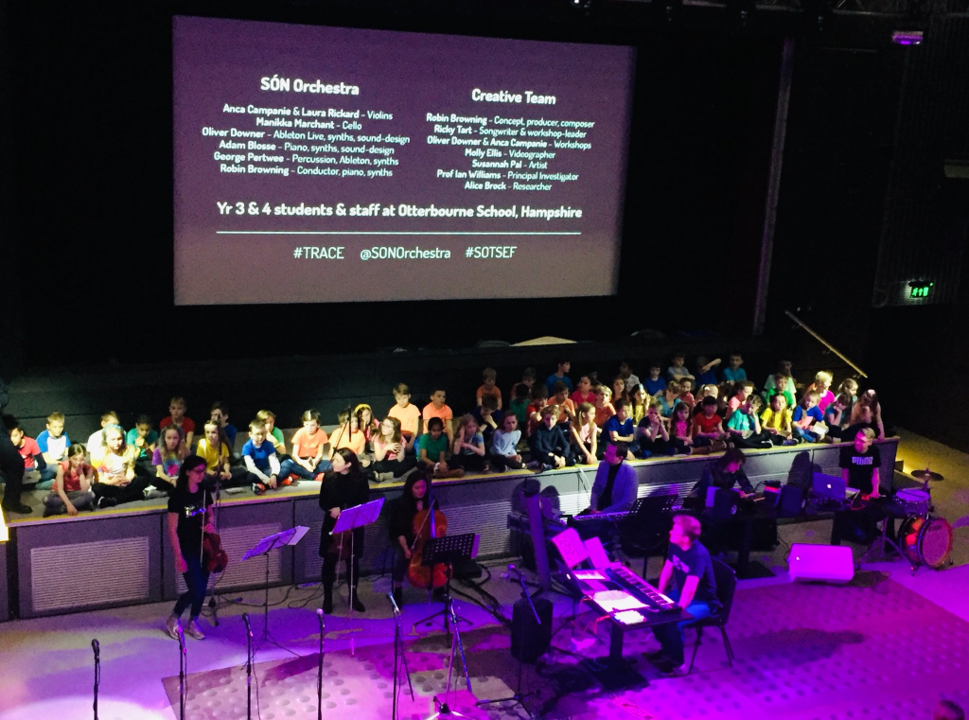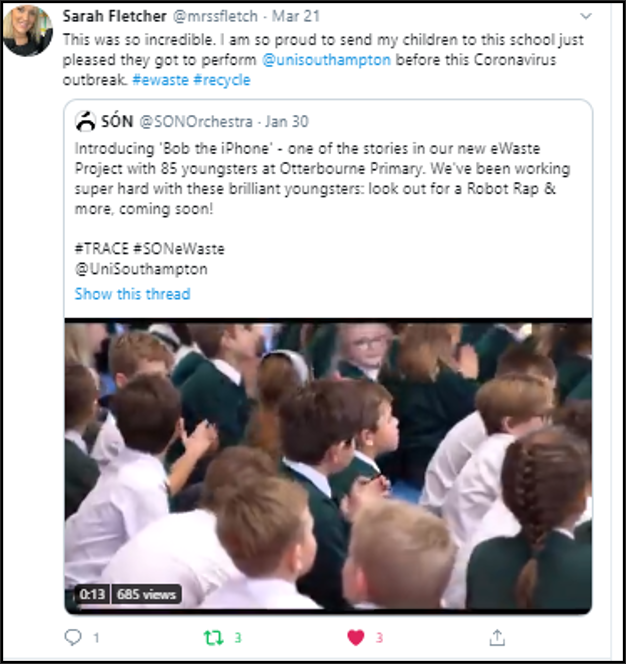- Home
- About
- Environmental Briefs
-
Distinguished Guest Lectures
- 2023 Water, water, everywhere – is it still safe to drink? The pollution impact on water quality
- 2022 Disposable Attitude: Electronics in the Environment >
- 2019 Radioactive Waste Disposal >
- 2018 Biopollution: Antimicrobial resistance in the environment >
- 2017 Inside the Engine >
- 2016 Geoengineering >
- 2015 Nanomaterials >
- 2014 Plastic debris in the ocean >
- 2013 Rare earths and other scarce metals >
- 2012 Energy, waste and resources >
- 2011 The Nitrogen Cycle – in a fix?
- 2010 Technology and the use of coal
- 2009 The future of water >
- 2008 The Science of Carbon Trading >
- 2007 Environmental chemistry in the Polar Regions >
- 2006 The impact of climate change on air quality >
- 2005 DGL Metals in the environment: estimation, health impacts and toxicology
- 2004 Environmental Chemistry from Space
- Articles, reviews & updates
- Meetings
- Resources
- Index
Combining art and science for effective public communication
|
Scientists struggle to convey scientific findings and concepts to the public. The Transitioning to a Circular Economy with creative artists project (TRACE) was a novel and ground-breaking collaboration between scientists, creative artists, and primary school children to communicate and raise awareness about electronic waste (e-waste) and accelerate the circular economy. TRACE aimed to demonstrate the capability of intergenerational and creative projects to raise awareness of, and influence public attitudes towards, e-waste. The project was a resounding success as 99% of audiences reporting a rise in awareness, 70% indicated an intention to change their e-waste disposal and 65% intended to change their reuse/
repair behaviour. |
Enabling effective resource management requires active public engagement, which pose huge challenges. Many political, environmental, social, technological, legal and economic approaches have been trialled, but little progress has been achieved because scientists frequently experience considerable difficulties communicatin g findings to the public. The TRACE project aimed to address this problem for e-waste by developing, trialling and testing a new public communication method. The campaign combined two rarely used methods: intergenerational influence and creative arts.
Communication methods
Traditional methods of public communication about waste include consultation papers and requests for comments; community information (posters, leaflets, doorstepping, focus groups); meetings (private or public); citizens’ juries and parliaments; workshops and seminars; advisory panels, committees and fora; stalls at fairs events; and media campaigns (radio / TV / the Internet). These channels tend to have limited, mainly short-term impacts. Even very high-profile campaigns in the UK – popular children’s TV characters The Wombles highlighting the problem of littering (1) and the Waste and Resources Action Programme’s highly acclaimed “Love Food Hate Waste” campaign (2) – failed to stop litter and food waste from growing. This is because these methods tended to assume that the divergence between scientific and public views are caused by incomplete/flawed public knowledge and, so communication efforts focused on public education and raising awareness.
Recent studies have highlighted that ideology, not knowledge, best predicts environment-related attitudes and behaviour (3). Thus, researchers have moved away from investigating cognitive bias towards understanding the effectiveness of emotion-based approaches (4). The problem is particularly notable in environmental science due to the immediacy of the issues at stake. Whilst the public may be aware of general environmental problems, they may be oblivious to new and emerging issues along with the collective positive outcomes effected by a change in their behaviour (5).
Awareness is significant, because i) citizen support is essential for implementation of ambitious environmental policies and ii) populism and its rhetoric are currently burgeoning, which often pushes the public away from policies based on science-based evidence (6). Hence, to communicate scientific findings in a way that is more accessible to the public, new methods must be explored.
Traditional methods of public communication about waste include consultation papers and requests for comments; community information (posters, leaflets, doorstepping, focus groups); meetings (private or public); citizens’ juries and parliaments; workshops and seminars; advisory panels, committees and fora; stalls at fairs events; and media campaigns (radio / TV / the Internet). These channels tend to have limited, mainly short-term impacts. Even very high-profile campaigns in the UK – popular children’s TV characters The Wombles highlighting the problem of littering (1) and the Waste and Resources Action Programme’s highly acclaimed “Love Food Hate Waste” campaign (2) – failed to stop litter and food waste from growing. This is because these methods tended to assume that the divergence between scientific and public views are caused by incomplete/flawed public knowledge and, so communication efforts focused on public education and raising awareness.
Recent studies have highlighted that ideology, not knowledge, best predicts environment-related attitudes and behaviour (3). Thus, researchers have moved away from investigating cognitive bias towards understanding the effectiveness of emotion-based approaches (4). The problem is particularly notable in environmental science due to the immediacy of the issues at stake. Whilst the public may be aware of general environmental problems, they may be oblivious to new and emerging issues along with the collective positive outcomes effected by a change in their behaviour (5).
Awareness is significant, because i) citizen support is essential for implementation of ambitious environmental policies and ii) populism and its rhetoric are currently burgeoning, which often pushes the public away from policies based on science-based evidence (6). Hence, to communicate scientific findings in a way that is more accessible to the public, new methods must be explored.
|
A rarely used method that has previously shown success in the field of waste management is intergenerational influence (7), where one generation has a positive influence on the behaviour of another. Intergenerational influence is interrelation between music and the environment is demonstrated by the recent emergence of “ecomusicology”, defined by Allen (11) as “the study of an underutilised communication pathway and can leverage and energise youth-initiated movements (8). To develop curiosity and enhance the wider skills of under- and post graduate students, I have, for over 30 years, encouraged them to reach out to primary and secondary school children. The purpose of this approach is to actively demonstrate how the thinking characteristics, skills and attributes of student scientists and engineers can be integrated and further developed to engage the next generation. With (now defunct) environmental charity Wastewatch, I worked on the “Taking Home Action on Waste” (THAW) project, which was among the first attempts to measure the intergenerational influence of an education programme on (recycling) behaviour at home (7). Focusing on primary-age children, the project showed that the school-based education programme led to increasing household participation in recycling as well as declining levels of waste generation. The work inspired American researchers to show that teaching in this way significantly increased parents’ concern over domestic refuse (9).
|
Another method for raising awareness of an issue is through art. There is a long history of art being used to communicate problems within society. Artists have an ability to convey issues in a highly emotional way, which could raise awareness, promote reflection and encourage behavioural change. Claude Monet’s conceptual art, especially his London Series paintings at the turn of the 20th century, was important in terms of exploring humanity’s relations to nature. Nevertheless, the environmental art movement only emerged in the 1960s, when individuals such as Jean-Max Albert and Piotr Kowalski laid the foundations for this form of art expression followed by many others. However, most artwork created to communicate an environmental message was not done so with an exact goal in mind. Thus, whilst nature and the environment have long been an inspiration for artists, the value and outcomes of making environmental scientific content visible via art have not really been tested (10).
Music has long been used for the purposes of environmental activism and protest, with a timeline that stretches from Woody Guthrie’s “This Land is Your Land” (1945) to Billie Eilish’s “All the Good Girls Go to Hell” (2019). The music, culture, and nature in all the complexities of those terms”, as a field of study. In particular, musical expressions of environmental activism have potential to animate environmentalist causes for children and can act as a method for coming to terms with existential threats (12). However, this powerful tool has been largely neglected by scientific communities seeking to educate and influence the public about environmental issues or the need for behavioural change (13).
A musical approach has been used for many years by two of my musician friends (Robin Browning and Anca Campagnie) during their work as educators and performers, and this assisted us to work together.
A musical approach has been used for many years by two of my musician friends (Robin Browning and Anca Campagnie) during their work as educators and performers, and this assisted us to work together.
The TRACE Project
Evaluating the potential of communicating environmental information and research through the arts is an emerging area. Few research projects have used the arts as a scientific communication method and, indeed, the few research papers on this topic tend to be reflective rather than systematic studies. Hence the TRACE Project was conceived, managed and led to trial and critically review the capability of intergenerational and creative projects to communicate to the public about e-waste to stimulate behavioural change towards circular economy principles. The project’s objectives were to: i) raise public awareness of the need for sustainable waste management using intergenerational education, ii) use art and music to portray the socio-economic technical challenges of e-waste management and the potential solutions to this crisis generated by research, and iii) change attitudes and behaviour towards e-waste
management in the public, the artists involved, the school children and their caregivers.
Evaluating the potential of communicating environmental information and research through the arts is an emerging area. Few research projects have used the arts as a scientific communication method and, indeed, the few research papers on this topic tend to be reflective rather than systematic studies. Hence the TRACE Project was conceived, managed and led to trial and critically review the capability of intergenerational and creative projects to communicate to the public about e-waste to stimulate behavioural change towards circular economy principles. The project’s objectives were to: i) raise public awareness of the need for sustainable waste management using intergenerational education, ii) use art and music to portray the socio-economic technical challenges of e-waste management and the potential solutions to this crisis generated by research, and iii) change attitudes and behaviour towards e-waste
management in the public, the artists involved, the school children and their caregivers.
|
An artist, musicians and 85 schoolchildren from Otterbourne Primary School in Hampshire participated in TRACE over several months in 2019-2020. The artist, Susannah Pal, was engaged to translate academic research on e-waste into artwork that provoked emotional responses and discussion to inspire action. The artwork invited the viewers to empathise with their discarded waste through anthropomorphising and imbuing it with an organic feel. The SÓN orchestra collaborated with schoolchildren to develop and produce original musical performances focusing on e-waste. All involved were guided by scientists to further their own understanding about e-waste and solutions to this problem. TRACE culminated in two musical performances by the SÓN orchestra and children with an attached art exhibition at the University of Southampton. Changes in awareness and attitudes to e-waste were critically analysed, by using the ABC Model framework.
|
The project concluded in March 2020 at the University of Southampton’s Highfield campus, just before COVID-19 lockdown was implemented, the children put on musical performances and took part in art exhibitions. The artist created a blog reflecting on her experience of the project and showcasing some of the work produced.
The musical performances art exhibitions, and an overall video of the project can be seen at the website:
https://ewaste.thesonproject.com/ and https:// www.youtube.com/watch?v=duDdWoq8BZE.
Susannah Pal’s blog can be read at the following link: http://www.susannahpal.com/blog/2020/3/26/ reflectionewaste.
The musical performances art exhibitions, and an overall video of the project can be seen at the website:
https://ewaste.thesonproject.com/ and https:// www.youtube.com/watch?v=duDdWoq8BZE.
Susannah Pal’s blog can be read at the following link: http://www.susannahpal.com/blog/2020/3/26/ reflectionewaste.
Findings
Conveying the gravity and adverse impacts of e-waste to the public effectively is a huge challenge. The TRACE project has shown that a communication method applying intergenerational influence combined with emotional responses to music and art can help to promote pro
environmental attitudes and behaviours. TRACE was successful in developing a new way to communicate to the public about e-waste through combining creative art and music, in tergenera tional influence and science. Independent, expert recognition of the project has been provided via receipt of a prestigious (communication) award at the 2021 UK National Recycling Awards.
Conveying the gravity and adverse impacts of e-waste to the public effectively is a huge challenge. The TRACE project has shown that a communication method applying intergenerational influence combined with emotional responses to music and art can help to promote pro
environmental attitudes and behaviours. TRACE was successful in developing a new way to communicate to the public about e-waste through combining creative art and music, in tergenera tional influence and science. Independent, expert recognition of the project has been provided via receipt of a prestigious (communication) award at the 2021 UK National Recycling Awards.
|
Anthropomorphism of e-waste and creating empathy was effective in stimulating emotional responses in participants. Intergenerational influence contributed to raising awareness in caregivers. In households where children had frequently discussed the project or were speakers or
soloists, caregivers were more likely to report higher levels of awareness. The degree to which awareness was raised, and its intensity, demonstrates the viability of the use of intergenerational influence and the creative arts as tools to communicate environmental issues effectively. The evidence from the TRACE project suggests that the audiences seem to have grasped the importance and impacts of e-waste generation. This response was probably because: i) the public judged that the scientific evidence provided was trustworthy and authoritative and ii) the emo tional messages from the ar t and musical performances worked well, i.e. hope exceeded fear, resulting in a desire to change behaviour in a pro environmental direction. The TRACE method could therefore be applied to generate public support for pro environmental policies based upon independently peer reviewed, widely supported, and trusted scientific evidence. This is a significant finding because citizen support is essential for implementation of ambitious environmental policies. Scientists and researchers are encouraged to develop partnerships with creative artists to accelerate uptake of their research findings. |
References
1. Read, Adam D. (1999). Making good use of the things that we find'- the Womble agenda for sustainable waste management in the UK. In Proc Int Conf Solid Waste Technol Manage, 1080-1087.
2. Yamakawa, H. et al. (2017). Food waste prevention: Lessons from the Love Food Hate Waste campaign in the UK. Proceedings of the Sixteenth International Waste Management and Landfill Symposium. S. Margherita di Pula, Cagliari, Sardinia, Italy, Oct 2 - 6, 2017. Paper No. 215. ISBN 9788862650113.
3. Nisbet E. C., Cooper K. E., Ellithorpe M. (2015). Ignorance or bias? Evaluating the ideological and informational drivers of communication gaps about climate change. Public Understanding of Science, 24, 285-301.
https://doi.org/10.1177/0963662514545909
4. Cooper K. E., Nisbet E. C. (2016). Green narratives: How affective responses to media messages influence risk p e r c e p ti o n s a n d policy preferences about environmental hazards. Science Communication, 38, 626-654.https://doi.org/10.1177/1075547016666843
5. Borthakur, A. and Govind, M. (2017). Emerging trends in consumers’ E-waste disposal behaviour and awareness: A worldwide overview with special focus on India. Resources, Conservation and Recycling. 117, 102– 113. https://doi.org/10.1016/j.resconrec.2016.11.011
6. Huber, R.A.; Fesenfeld, L. & Bernauer, T. (2020). Political populism, responsiveness, and public support for climate mitigation. Climate Policy, 20(3), 373-386. https://doi.org/10.1080/14693062.2020.1736490
7. Maddox, P. et al. (2011). The role of intergenerational influence in waste education programmes: The THAW project. Waste Management. 31(12), 2590–2600. https://doi.org/10.1016/j.wasman.2011.07.023
8. Lawson, D.F et al. (2018). Intergenerational learning: Are children key in spurring climate action? Global Environmental Change, 53, 204-208. https://doi.org/ 10.1016/j.gloenvcha.2018.10.002
9. Rosen, J., How teaching kids about climate change can influence their conservative parents. Los Angeles Times, 6 May 2019. https://www.latimes.com/science/ la-sci-climate-change-kids-parents-20190506- story.html (Accessed 03.05.2021).
10. Madden, L. et al. (2022). From Science in the Art Gallery to Art in the Science Classroom: Using Arts-Integrated Professional Development to Enhance Environmental Education. Journal of College Science Teaching, 51(6), 35-44
11. Allen, A.S. Ecomusicology. The Grove Dictionary of American Music. New York: Oxford University Press, 2014.
12. Hansen, K. A . (2020). The Earth is Sick : Environmentalism and the Politics of Age and Gender in Children’s Musical Culture. IASPM Journal, 10(2), 3-19.
13. Crowther, G.J. et al. (2016). Leveraging the power of music to improve science education. International Journal of Science Education 38, 73–95. https://doi.org/ 10.1080/09500693.2015.1126001
1. Read, Adam D. (1999). Making good use of the things that we find'- the Womble agenda for sustainable waste management in the UK. In Proc Int Conf Solid Waste Technol Manage, 1080-1087.
2. Yamakawa, H. et al. (2017). Food waste prevention: Lessons from the Love Food Hate Waste campaign in the UK. Proceedings of the Sixteenth International Waste Management and Landfill Symposium. S. Margherita di Pula, Cagliari, Sardinia, Italy, Oct 2 - 6, 2017. Paper No. 215. ISBN 9788862650113.
3. Nisbet E. C., Cooper K. E., Ellithorpe M. (2015). Ignorance or bias? Evaluating the ideological and informational drivers of communication gaps about climate change. Public Understanding of Science, 24, 285-301.
https://doi.org/10.1177/0963662514545909
4. Cooper K. E., Nisbet E. C. (2016). Green narratives: How affective responses to media messages influence risk p e r c e p ti o n s a n d policy preferences about environmental hazards. Science Communication, 38, 626-654.https://doi.org/10.1177/1075547016666843
5. Borthakur, A. and Govind, M. (2017). Emerging trends in consumers’ E-waste disposal behaviour and awareness: A worldwide overview with special focus on India. Resources, Conservation and Recycling. 117, 102– 113. https://doi.org/10.1016/j.resconrec.2016.11.011
6. Huber, R.A.; Fesenfeld, L. & Bernauer, T. (2020). Political populism, responsiveness, and public support for climate mitigation. Climate Policy, 20(3), 373-386. https://doi.org/10.1080/14693062.2020.1736490
7. Maddox, P. et al. (2011). The role of intergenerational influence in waste education programmes: The THAW project. Waste Management. 31(12), 2590–2600. https://doi.org/10.1016/j.wasman.2011.07.023
8. Lawson, D.F et al. (2018). Intergenerational learning: Are children key in spurring climate action? Global Environmental Change, 53, 204-208. https://doi.org/ 10.1016/j.gloenvcha.2018.10.002
9. Rosen, J., How teaching kids about climate change can influence their conservative parents. Los Angeles Times, 6 May 2019. https://www.latimes.com/science/ la-sci-climate-change-kids-parents-20190506- story.html (Accessed 03.05.2021).
10. Madden, L. et al. (2022). From Science in the Art Gallery to Art in the Science Classroom: Using Arts-Integrated Professional Development to Enhance Environmental Education. Journal of College Science Teaching, 51(6), 35-44
11. Allen, A.S. Ecomusicology. The Grove Dictionary of American Music. New York: Oxford University Press, 2014.
12. Hansen, K. A . (2020). The Earth is Sick : Environmentalism and the Politics of Age and Gender in Children’s Musical Culture. IASPM Journal, 10(2), 3-19.
13. Crowther, G.J. et al. (2016). Leveraging the power of music to improve science education. International Journal of Science Education 38, 73–95. https://doi.org/ 10.1080/09500693.2015.1126001

